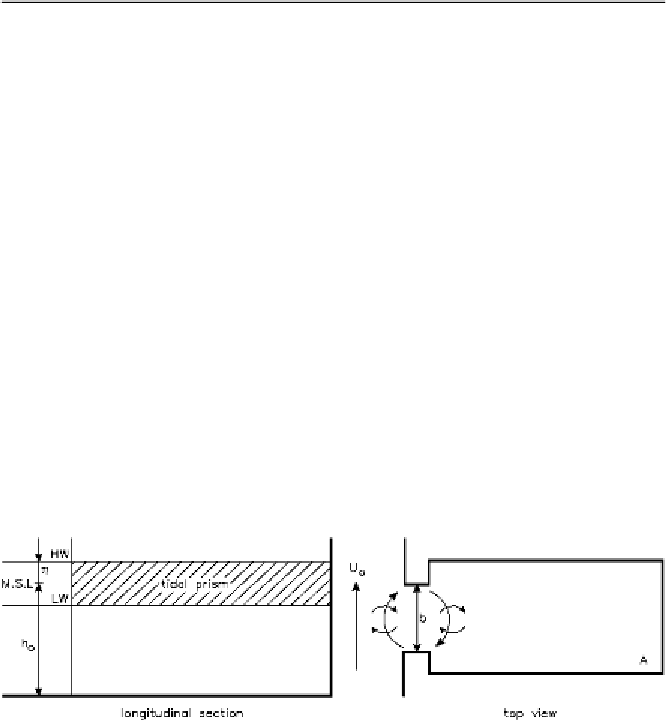Environmental Engineering Reference
In-Depth Information
Table 4
Water exchange and siltation data of some harbors
Harbor
Region
Country
V
t
+
V
h
V
d
V
e
(10
6
m
3
(10
6
m
3
(10
6
m
3
/
tide)
/
tide)
/
tide)
Braakman
North Sea
Netherlands
5.5
11.0
16.5
Paulina
North Sea
Netherlands
13.0
16.1
29.1
Um-Qasr
P. Gulf
Iraq
6.7
7.6
14.3
Port Gardner Puget Sound
USA (WA)
- present
1.1
6.1
7.2
- future
2.4
19.0
21.4
design
Source: Eysink (1995)
due to density currents (
V
d
), and the extra water exchange due to flushing
(
V
ef
):
V
e
=
V
t
+
V
h
+
V
d
+
V
ef
(6)
Some examples are given in Table 4. The quantities
V
h
,
V
d
and
V
ef
are less
obvious than
V
t
and are dealt with in more detail in the next sections.
3.2
Water Exchange by a Horizontal Eddy
A current passing the entrance of a basin generates an eddy in this entrance
(see Fig. 2). There, steep velocity gradients generate an exchange of water by
turbulence. Through this mechanism silt laden water from outside penetrates
the eddy and from there further into the harbor and to the center of the eddy.
The rate of water exchange by this mechanism depends on the flow velocity
in front of the harbor basin, the size of the entrance and the tidal prism.
It will be obvious that the rate of exchange decreases with increasing tidal
prism. The rate of “horizontal water exchange” can be approximated [33] by
Fig. 2
Definition of tidal prism and horizontal exchange mechanism (HW = high water
level, LW = low water level, MSL = mean sea level,
u
o
= flow velocity river,
b
=widthat
mouth of harbor)




